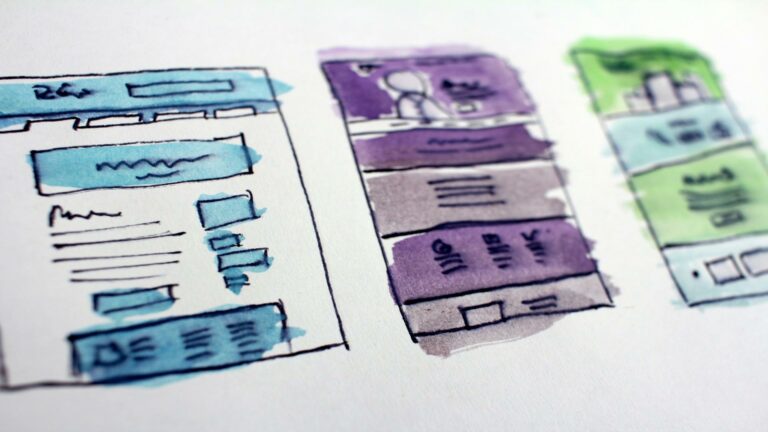Optimize Website Canonical Tags: The Ultimate Guide
Optimizing Website Canonical Tags for SEO Success
In the ever-evolving world of search engine optimization (SEO), understanding how to optimize website canonical tags is crucial for improving your site’s visibility and search rankings. Canonical tags play a vital role in managing duplicate content issues and directing search engines to the preferred version of a page. By implementing these tags correctly, you can consolidate your site’s ranking power and avoid potential penalties.
Understanding Canonical Tags
Canonical tags are HTML elements that help search engines identify the primary or ‘canonical’ version of a webpage when multiple similar pages exist. They are essential for:
- Preventing duplicate content issues
- Consolidating link equity
- Improving crawl efficiency
- Enhancing overall SEO performance
To implement a canonical tag, you’ll need to add a line of code in the <head> section of your HTML, like this:
<link rel='canonical' href='https://www.example.com/preferred-page/' />
Best Practices for Optimizing Canonical Tags
To effectively optimize your website’s canonical tags, consider the following best practices:
- Use absolute URLs: Always include the full URL, including the protocol (http:// or https://) in your canonical tags.
- Self-reference canonicals: Include a self-referencing canonical tag on every page, even if it’s the only version.
- Consistency across pages: Ensure that all versions of a page point to the same canonical URL.
- Avoid chains and loops: Canonical tags should point directly to the preferred version, not through a series of redirects.
- Use HTTPS versions: If your site supports HTTPS, always use the secure version in your canonical tags.
By following these guidelines, you can effectively manage duplicate content and improve your website’s SEO performance. Remember, proper implementation of canonical tags is just one aspect of a comprehensive SEO strategy. For expert assistance in optimizing your website’s SEO, consider partnering with professionals who can provide tailored solutions for your business needs.
What Are Canonical Tags?
Understanding Canonical Tags and Their Importance
Before diving into optimization techniques, it’s crucial to grasp the concept of canonical tags and their significance in SEO:
Canonical tags, also known as rel=”canonical” tags, are HTML elements that serve as a powerful tool for search engine optimization. Their primary function is to help search engines identify the preferred version of a web page when multiple similar versions exist. This is particularly important for websites with duplicate or near-duplicate content, which can occur due to various reasons such as URL parameters, print-friendly versions, or product variations.
The importance of canonical tags in SEO cannot be overstated:
- Preventing Duplicate Content Issues: By specifying the canonical URL, you avoid diluting your site’s ranking power across multiple similar pages.
- Consolidating Link Equity: Canonical tags help consolidate ranking signals from various versions of a page to the preferred URL, boosting its overall SEO performance.
- Improving Crawl Efficiency: By guiding search engines to the primary version of your content, you help them crawl your site more efficiently.
- Enhancing User Experience: Canonical tags ensure that users are directed to the most relevant and up-to-date version of your content.
Implementing canonical tags correctly is essential for maximizing your content’s SEO potential and maintaining a clean, organized website structure. As we delve deeper into optimization techniques, keep in mind that proper use of canonical tags is fundamental to a robust SEO strategy.
Why Optimize Website Canonical Tags?
The Power of Optimizing Website Canonical Tags
Optimizing your website’s canonical tags is a crucial step in enhancing your site’s SEO performance. When implemented correctly, canonical tags can significantly impact your online presence and search engine rankings. Let’s delve into the key benefits of proper canonical tag optimization:
- Improved search engine rankings: By specifying the preferred version of a page, you help search engines understand which URL to prioritize in search results, potentially boosting your rankings.
- Consolidated link equity: Canonical tags allow you to consolidate link equity from multiple similar pages to a single, authoritative URL, strengthening its overall ranking power.
- Better crawl efficiency: By guiding search engine bots to the most important pages, you can improve your site’s crawl efficiency and ensure that your valuable content is indexed properly.
- Reduced duplicate content issues: Canonical tags help prevent duplicate content penalties by clearly indicating the preferred version of similar or identical pages.
- Enhanced user experience: When search engines display the correct version of your pages, users are more likely to find the most relevant and up-to-date content, leading to a better overall experience.
To fully leverage these benefits, it’s essential to implement canonical tags correctly. Here are some best practices to consider:
- Use absolute URLs in your canonical tags to avoid any confusion or misinterpretation by search engines.
- Implement self-referencing canonical tags on your main pages to reinforce their importance.
- Consistently use HTTPS versions of your URLs in canonical tags if your site supports secure connections.
- Regularly audit your canonical tags to ensure they are correctly implemented and pointing to the desired pages.
By optimizing your website’s canonical tags, you’re not only improving your site’s SEO performance but also creating a more streamlined and user-friendly online presence. Remember, proper canonical tag implementation is just one piece of the SEO puzzle, but it’s an important one that shouldn’t be overlooked in your overall digital marketing strategy.
Common Mistakes to Avoid When Optimizing Canonical Tags
Common Pitfalls When Optimizing Website Canonical Tags
As you work to optimize website canonical tags, be aware of these common pitfalls that can undermine your SEO efforts:
- Using multiple canonical tags on a single page: This can confuse search engines and negate the benefits of canonicalization. Always specify only one canonical URL per page to maintain clarity and consistency.
- Canonicalizing to irrelevant or low-quality pages: Ensure that the canonical URL points to the most valuable and relevant version of the content. Proper implementation of canonical tags improves rankings and prevents duplicate content issues.
- Inconsistent use of trailing slashes: Decide whether to use trailing slashes in your URLs and stick to that convention consistently. This helps maintain a uniform URL structure across your site.
- Ignoring dynamic parameters: For pages with dynamic parameters, make sure to canonicalize to the clean, parameter-free version when appropriate. This is particularly important for e-commerce sites with product variations or filtered content.
- Neglecting to update canonical tags during site migrations: When moving content or changing URL structures, update your canonical tags accordingly. This ensures that search engines understand the new relationship between your pages.
- Forgetting to use absolute URLs: Always use absolute URLs in your canonical tags to avoid any ambiguity. Relative URLs can lead to misinterpretation by search engines.
- Overlooking self-referential canonicals: Implement self-referencing canonical tags on all pages, even those without duplicates, to provide clear direction to search engines about which URL should be indexed.
By avoiding these pitfalls and following canonical tag best practices, you can effectively consolidate your site’s SEO power and improve your search engine visibility.
How Web Design London Can Help Optimize Your Website’s Canonical Tags
Expert Canonical Tag Optimization Services
At Web Design London, we understand that optimizing website canonical tags is a crucial aspect of technical SEO that can significantly impact your site’s performance. Our team of SEO experts is dedicated to helping you navigate this complex process efficiently and effectively. We offer a comprehensive suite of services to ensure your canonical tags are optimized for maximum SEO benefit:
- In-depth website audits: Our specialists conduct thorough analyses of your current canonical tag implementation, identifying opportunities for improvement and potential issues that may be hindering your site’s performance.
- Tailored canonicalization strategies: We develop custom plans to optimize your canonical tags based on your website’s unique structure, content, and business objectives. This ensures a perfect fit for your specific needs.
- Expert implementation support: Our technical team provides hands-on assistance in implementing the necessary changes to your website’s canonical tags, ensuring proper execution and minimizing potential disruptions.
- Continuous monitoring and refinement: We employ advanced tools to monitor your canonical tags’ performance continuously. This allows us to make timely adjustments and ensure your site maintains optimal SEO health.
- Seamless integration with overall SEO strategy: Our approach ensures that canonical tag optimization aligns perfectly with your broader SEO goals, creating a cohesive and powerful strategy for improved search engine visibility.
By leveraging our expertise in canonical tag optimization, you can effectively consolidate your site’s link equity, prevent duplicate content issues, and improve your overall search engine rankings. Let Web Design London be your partner in achieving SEO success through expert canonical tag management.
Conclusion: The Impact of Optimized Canonical Tags on Your SEO Success
Optimize Your Website’s Canonical Tags for SEO Success
Optimizing website canonical tags is a crucial component of a successful SEO strategy. By implementing effective canonicalization techniques, you can significantly improve your search engine rankings, consolidate link equity, and provide a better user experience for your website visitors.
Here are some key steps to optimize your website’s canonical tags:
- Implement self-referencing canonical tags: Add canonical tags to all indexable pages, pointing to themselves. This helps prevent duplicate content issues and ensures search engines understand the preferred URL for each page.
- Use absolute URLs: Always use full, absolute URLs in your canonical tags to avoid any confusion or misinterpretation by search engines.
- Consistently use HTTPS: If your site has both HTTP and HTTPS versions, ensure all canonical tags point to the secure HTTPS version.
- Address URL parameters: Properly handle URL parameters to prevent duplicate content issues, especially for e-commerce sites with sorting and filtering options.
- Regularly audit your canonical tags: Use tools like Semrush to periodically check and ensure your canonical tags are correctly implemented and functioning as intended.
Remember, canonical tag optimization is just one piece of the SEO puzzle. A comprehensive SEO strategy should also include technical SEO, content optimization, and link building to maximize your website’s search engine performance.
By focusing on these key areas and implementing best practices for canonical tags, you can improve your website’s visibility in search results, drive more organic traffic, and ultimately achieve your online business goals.
For more in-depth guidance on implementing canonical tags and other SEO best practices, consider consulting with SEO experts who can provide tailored advice for your specific website and industry.













